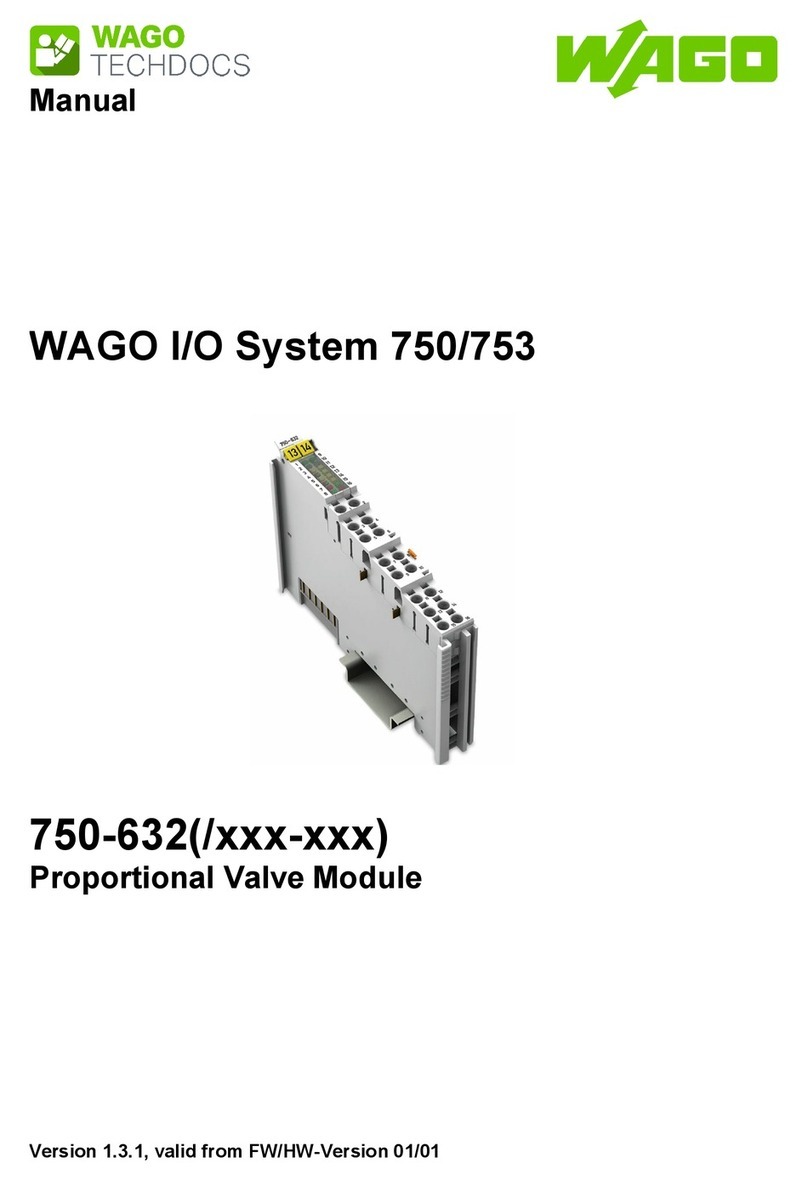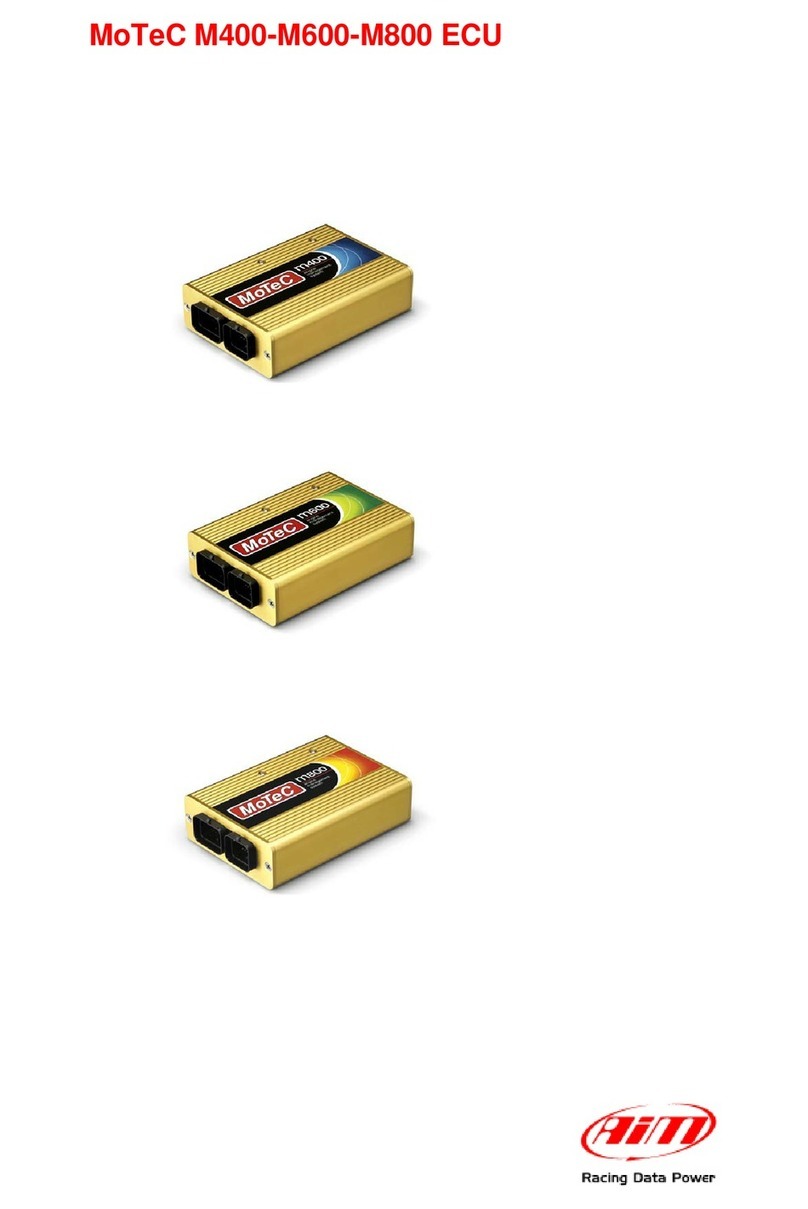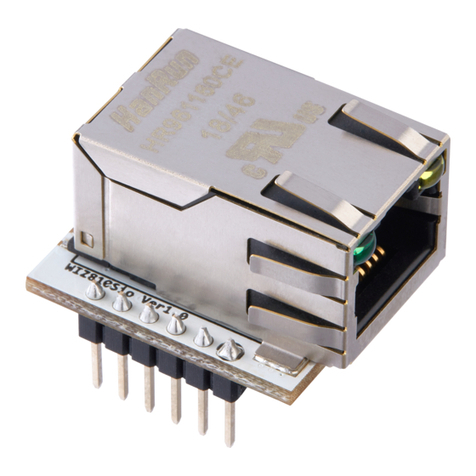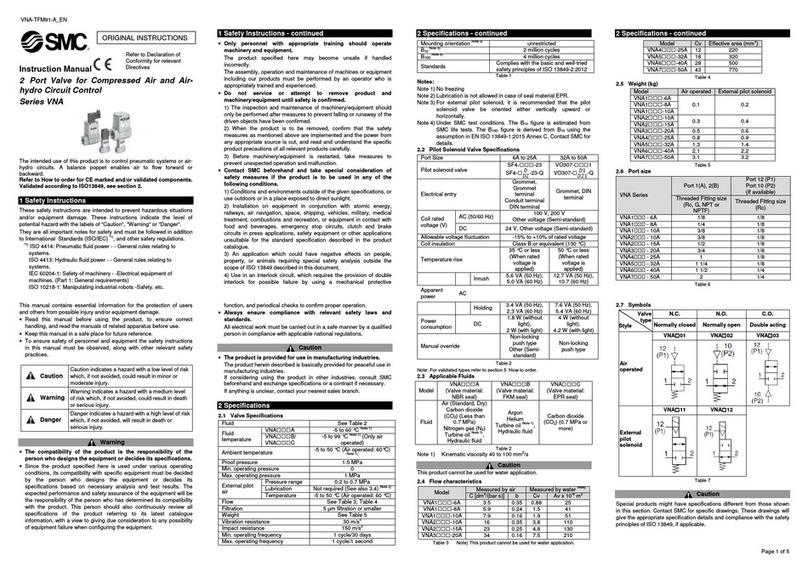Discrete Wireless MARCUS 3G GPRS User manual

MARCUS®
3G GPRS Radio Module
MARCUS® 3G Rev W2
Radio Module
Installation Manual

2
NOTICE
This installation guide is published and copyrighted by Discrete Wireless, Inc.
Information and specifications contained in this document are subject to change
without notice and do not represent commitments on the part of Discrete Wireless.
Under copyright laws, no part of this user’s guide may be reproduced or transmitted
in any form or by any means, electronic or mechanical, including photocopying and
recording, for any purpose, without the express written permission of Discrete
Wireless, Inc. This manual does not constitute a warranty as to any product or
service, except to the extent expressly provided in the agreement under which such
a product or service was provided.
TRADEMARKS
MARCUS®is a register trademark of Discrete Wireless, Inc. All other trademarks and
service marks contained are the property of their respective owners.
DISCLAIMER
The complete terms and conditions under which Discrete Wireless, Inc. provides
hardware and services are contained in separate agreements. Nothing in this
document is intended to create additional or separate warranties or guarantees.
© 2000-2008 Discrete Wireless, Inc. All Rights Reserved.
400 Northridge Road, Suite 500
Atlanta, Georgia 30350
Tel: (678) 338-5950
Fax: (678) 338-5957
E-mail: [email protected]
Website: www.discretewireless.com

3
Contents____________________________________________________
This manual covers the following:
1INTRODUCTION
1.1 Introduction to the MARCUS®3G Radio Module 4
1.2 Overview 4
1.3 MARCUS®3G Radio Module (MRM) Hardware 4
1.4 MARCUS®3G Wiring Diagrams 6
2EQUIPMENT AND TOOLS
2.1 Recommended Tools 6
2.2 Recommended Supplies 6
3ANTENNAS
3.1 General Antenna Guidelines 7
3.2 GPS Antenna 7
3.3 RFAntenna 7
3.4 Combo GPS/RF antenna 8
4VEHICLE WIRING
4.1 To Connect Power 9
4.2 Using Wire Crimp 9
4.3 Securing Ground Wire 10
4.4 Power Specifications 10
5 RADIO MODULE LOCATION
5.1 Radio Module Location 11
5.2 Radio Module Placement 12
5.3 Radio Module Mounting 12
6AFTER INSTALLATION TESTING
6.1 In the Field 13
6.2 Over the Internet 13
7TROUBLESHOOTING AN INSTALLATION
7.1 Troubleshooting Guide 14
8APPENDIX A: INSTALLATION OF THE MARCUS PTO/DOOR SENSOR 15
9APPENDIX B: INSTALLATION INFORMATION SHEET 17
10 APPENDIX C: TECHNICAL PICTURES OF MARCUS 18
11 APPENDIX C: TECHNICAL SPECIFICATIONS 19
List of Figures and Pictures
1.2.1 Picture - MARCUS®3G Radio Module
1.2.2 Figure - MARCUS®3G Radio Module with Combo GPS/RF antenna & pwr harness
3.3.1 Picture - Example Placement of Glass Mount GPS and RF Antennas
3.3.2 Picture – Example Placement of Combo GPS and RF antenna
4.1 Picture - Example Placement of MARCUS®Radio Module inside dashboard
4.2 Picture - Example Placement of MARCUS®Radio Module inside dashboard
4.3 Picture - Example Placement of MARCUS®Radio Module inside dashboard
5.1 Picture - Proper use of in-line power crimp
5.2 Picture - Proper placement of electrical ground wire
5.3 Figure – MARCUS®3G Radio Connector Pin Layout

4
1.1 Introduction
Welcome: Following the purchase of the MARCUS®Radio Module, there will be several
factors to consider prior to its installation, including placement of the radio module and
selection and placement of the GPS & Radio antenna. This Operator’s Manual is designed to
provide instructions for the installation of the Discrete Wireless Third Generation (3G)
wireless in-vehicle hardware; MARCUS®3G Rev W-2. This manual also provides a detailed
description of the MARCUS®3G Radio Module with optional input/outputs (I/O).
Purpose: The purpose of this document is to outline the general requirements for installing
the MARCUS®Radio Module for use with the MARCUS®GPS Fleet Management Application.
Audience: This document is designed for new and experienced installers and their
managers to help overcome difficulties associated with radio module installations.
Scope: This manual covers the following:
· Equipment and Tools
· Antenna Types
· Installations
· Troubleshooting
Wireless Network: The MARCUS®3G GPRS (Global Packet Radio Service) Radio Module is
optimized to be utilized on the AT&T GPRS nationwide network in the U.S., Canada and
other US based GPRS Data Networks.
1.2 Overview
The purpose of the MARCUS®Web application is to track vehicles using a standard Internet
connection. The overall system consists of one or more mobile devices and the Discrete
Wireless Gateway. A tracking device can be easily installed inside any vehicle. The MARCUS®
Radio Module can also monitor operational status and can collect data from external probes
or sensors through the Sensor Connector. All of this information is transferred to the
Discrete Wireless Gateway through a wireless communication link. The Discrete Wireless
Gateway is capable of controlling and monitoring multiple mobile devices. The position data
received from the mobile devices is transferred to the Discrete Wireless Gateway where it is
displayed on a Geographical Information System (GIS) utilizing mapping technology within
the Internet-based on the MARCUS®GPS Fleet Management Application.
1.3 MARCUS®3G Radio Module Hardware
The mobile devices are small, can be easily and quickly attached to a vehicle, and will
receive commands, provide GPS position data and status information to the Discrete
Wireless Gateway via various wireless networks.
The GPS and wireless communication modules require additional antenna. The device is
powered by an external power supply; vehicle power (9-30 volts). The devices are
designed to be installed in the vehicles cab and are capable of surviving and functioning
inside the vehicle. The unit is not waterproof, nor is it designed to be placed near or
on heat generating sources (in the engine compartment, attached to the heater).

5
The mobile devices consist of a nylon plastic engineered housing containing the electronic
components. This includes the GPRS radio modem, the GPS receiver, along with power
modules capacitors and support components. Also included, are the separate power
connection cable, cellular and GPS antenna with cables. A listing of all these components
their size and specification is given in Appendix B. The box enclosure exterior
measurements and weight for each MARCUS®3G Radio Module is given below.
The MARCUS®3G Radio Module – 1.375” H x 3.375” L x 4.75” W. Weight 5.7 ounces, is
shown below.
1.2.1 Picture - MARCUS®3G Radio Module
The MARCUS®3G Radio Module has an operating temperature range of -10 degrees to +60
degrees centigrade, and operates in an extended temperature range of -30 degrees to +75
degrees centigrade for a short period of time. Reminder: The unit is not waterproof; it
is not designed to be exposed to excessive moisture or temperatures.
External mounting tabs are provided which will allow the mobile device to be secured to the
chassis of the vehicle. The box is black, and no part of the box will be less than one-eighth
of an inch (1/8) thick.
The MARCUS®family of devices uses a common suite of connectors among the devices. The
connector configuration is composed of dissimilar connectors to eliminate the chance of an
operator incorrectly wiring the unit. Four connectors make up the connector configuration.

6
MARCUS®3G Radio Module Wiring Diagrams
Figure 1.2.2 below shows the MARCUS®3G Radio Module with a Combo GPS/Radio
antenna.
2. Equipment and Tools
The following is a general list of tools and supplies required for installation of the MARCUS®3G
Radio Module.
2.1 Recommended Equipment
Digital Volt and Ohm meter (DVOM)
Screwdrivers (standard, Phillips, Torx,
Hex)
Wire Strippers / Wire cutters
Coax stripper
Pliers
Razor knife
Cordless Drill
Drill bits
Wire snake
Crimping tool
Upholster removal tool
Flash light
Standard and Metric Socket set
2.2 Recommended Supplies
Electrical tape
Double sided tape
Velcro
Silicon sealant
3 amp fuses
Ground terminals
Tie-Wraps
Grommets
Crimp connectors
Butt end connectors
Sheet metal screws
18-gauge wire

7
3. Antennas
3.1 General Antenna Guidelines
Introduction
Among all installation variables, antenna location has the greatest impact on the performance of
the radio module. Great care should be taken before selecting and installing the antennas. The
standard antenna types that are used with the MARCUS®3G Radio Module are Glass Mount
Antennas. The below is an overview of these types and the recommended installation guidelines
for each.
Glass Mount Antennas
The most popular type of antenna is the glass mount, 1dB gain antenna. This antenna does not
require a mounting hole and is mounted on the inside glass of the vehicle's window. Observe the
manufacturer's precautions when mounting the antenna near defroster wires. The defroster
wires, as well as metal flake-treated windshields, can impede or stop the transfer of radio energy
through the glass.
3.2 GPS Antenna
As a general rule, the placement of the GPS antenna must have a clear view of a large portion of
the sky in order to be able to receive GPS satellite data. It is recommended that the GPS
antenna have a clear view of at least 40 % of the sky and be as horizontal as possible. Reception
is shielded by metal, but the antenna can be under such non-metallic materials such as plastic,
fiberboard, fiberglass, etc. The GPS antenna should be a + 3.3V active gain (+26 dBm gain)
antenna. You should always refer to the antenna manufacturer’s guidelines that will be included
with the antenna packaging.
3.3 RF Antenna
As a general rule, the placement of the Radio Frequency (RF) antenna is as high and vertical as
possible. Windscreens, ladder racks, or other radio transmission antennas should not obstruct
the antennas view of the sky. If there are other radio antennas on the vehicle, position the
MARCUS RF transmission antenna at least 18 inches away. You should always refer to the
antenna manufacturer’s guidelines that will be included with the antenna packaging.

8
3.3.1 Picture - Example Placement of Glass Mount GPS and RF Antennas
3.4 Combo GPS/RF Antenna
Some configurations come with a combination GPS/RF antenna. This antenna should be placed
on the center and top of the windshield with the TX/RX side facing to the sky.
3.3.2 Picture - Example Placement of Glass Mount GPS and RF combo Antenna

9
4. Vehicle Wiring
4.1 To connect power-
It is helpful to review the owner’s manual of each vehicle to determine which wires are
acceptable to use. Test probable wires with a digital voltmeter to determine if they have the
proper voltage in both the engine running, and engine off states. It is recommended that a 14-
18 gauge wire crimp be used to splice onto the proper wire. Acceptable methods of power wire
installation include poke and wrap, T-taps and scotch locks.
A constant power source is essential in the retention of GPS data inside the MARCUS®
unit, and is REQUIRED. Be sure to verify that the power source you have chosen will work
when the vehicle is not running, and the keys are removed. Insert a 3-amp fuse in-line with
the power and ignition lead. This will protect the unit against power surges and
voiding the warranty. There are 2 in-line fuses included in the installation kit.
An Ignition source is also required for proper operation of the MARCUS unit. This wire
can be found in close proximity to the main power wire. Be sure that the wire that is tapped
is an ignition wire and not an accessory wire. Some vehicles have wires that are only
powered when vehicle is running, this is the preferred wire.
If there are any questions on what wire colors to use, you can contact the Field Operations
Director or Supervisor
The best place to pull power is at the ignition harness leading
to the ignition switch.
Make sure the ground point is WELDED not bolted to the under dash supports.
4.2 To use wire crimp
Find constant 12+v wire and slide crimp
over wire. Slide red fused wire from Marcus
power cable all the way into the holder and
crimp with pliers. Cable tie the fused wire to
the lead wire. Next, find an ignition wire
that is 12+v when ignition is in the RUN
position and open or ground when ignition is
off. Slide crimp onto lead wire and then
insert fused ignition lead into side of crimp
and crimp with pliers. Cable tie the fused
wire to the lead wire. Apply Torque Seal to
all connections.
4.2.1 Picture - Proper use of in-line
power crimp

10
4.3 Securing ground wire.
Strip enough slack in the power cable to
allow sufficient length as to attach the
black wire to a solid metal surface that is
welded, not bolted to an under dash
support. Add a grounding ring connector
to the end of the black wire, crimp it and
screw it securely onto a non painted metal
frame or plate. Temporarily connect the
radio module to ensure it is on constant
power before final placement.
4.3.1 Picture - Proper placement of
electrical ground wire
NOTE: When installing the Marcus® 3G unit in any late (new) model vehicle, verify all
connections using a digital multi-meter. In some instances, obtaining power will require direct
connection to the battery. CAN based vehicles will contain data lines which will show voltage on
the line itself (usually 5V) but the line is actually a data line. Most late (new) model vehicles
utilize “CAN” based ignition and accessory circuits so the ignition line running down the center of
the steering column is actually a data circuit. Connecting the Marcus® 3G Module to these
circuits can and will cause the unit to malfunction and may also damage the OEM electronic
modules within the vehicle. As a rule of thumb always use the thickest wires, as they
carry the most amperage.
4.4 Power Specifications
The power connector on the unit is a female Molex plug with 8 pins of which three are used to
power the MARCUS®unit, and four pins are left available for sensor installations. These mate with
the male Molex connector attached to the power cable. The power cable connector has a red +
VDC lead, a white switched lead, and a black ground lead.
The power for each MARCUS®3G Radio Module consumes approximately 80 milliamps while
transmitting data over GPRS networks, and 35 milliamps when the unit is not transmitting or in
sleep mode. In sleep mode the unit will draw the same amount of energy as the vehicles ECU.
There is an external connector for the power into the unit. The unit will operate with external
vehicle power between +9 to +30 volts DC. The power supply board inside the box converts the
externally supplied power to voltages needed by the system through DC-to-DC conversion
components. The unit has been designed to power down in a “sleep” mode when the ignition is
turned off to minimize battery drain.
All sensors and Ignition events are on a 3 second delay. When there is a state change,
it will take the Marcus unit 3 seconds to accept that a state change has occurred before
transmitting the ignition or sensor data.

11
Wiring Harness
1) +12 Volt Input
2) Ground Input
3) Ground input
4) AUX Ground output
5) AUX Ground output
6) Vehicle Ignition
7) Constant +12 Volts
8) Chassis Ground
5. Radio Module Location
The MARCUS®3G Radio Module placement is dependant on several factors.
-the type of vehicle
-the placement of the antennas
-the availability of a constant 12 volt power supply
5.1 Radio Module Location
In most vehicles, the module can be
placed inside or underneath the
dashboard. The vehicle’s radio can be
removed and the unit placed behind
the radio. A kick plate can be
removed, and the unit can be safely
secured to a firewall or zip-tied onto a
permanent fixture. The module can be
secured underneath the dashboard on
either the driver or passenger side, in
any location that will not interfere with
the safety of vehicle operation. The
device can be secured by the included
Tie Wraps or by self taping screws or
Velcro tape.
5.1 Picture - Example Placement
of MARCUS®Radio Module inside
dashboard
5.4.1 Figure – MARCUS®3G
Rev W2 Radio Connector Pin
Layout, as viewed from back of
plug

12
5.2 Radio Module Placement
Avoid placing the unit near moving
parts, or next to any of the vehicle’s
pedals.
Always consider the placement of the
antennas and be sure the cables can
reach the desired location of the
mobile.
Permanently mount the MARCUS®
Radio Module
5.2 Picture - Example
Placement of MARCUS®Radio
Module inside dashboard
5.3 Radio Module Mounting
Connect the radio, GPS, and power
cables to the MRM. Wrap any extra
cable neatly with tie-wraps or
electrical tape. Replace all paneling
or molding that was removed in the
running of any antennae wires or
power cable.
(Before final placement of module,
please read and complete Appendix
B, vehicle wiring)
5.3 Picture - Example
Placement of MARCUS®Radio
Module inside dashboard

13
6. After Installation Testing
6.1 In the Field
The MARCUS®3G Radio Module registers on the Discrete Wireless Gateway for the first time
when it’s in both radio and GPS coverage and the ignition is switched on. You can determine
whether or not the unit is in coverage easily by the presence of solid green lights on the face of
the MARCUS®3G Radio Module. When the module is operating correctly there should be a solid
green light on PWR, GPS, and COM. Note: The Radio light will flicker when transmitting.
6.2 On the Internet
It is recommended that after installation, the vehicle be driven around for 2 to 4 minutes.
Through a computer connected to the Internet, using Internet Explorer 5.5 or higher, go to
www.discretewireless.com and sign in using the end-users or dealers login and password. (note:
Firefox browser will not work properly)
After logging into the end-users account, view the recently installed unit under the Find Tab (see
MARCUS®GPS FLEET MANAGEMENT APPLICATION USER’S GUIDE). Check the recent history of the
vehicle and verify the unit is operational.
If you have a mobile phone with an internet browser, you can go to www.trackerinstall.com and
verify operation. This will also work with internet explorer, though it is designed to be read on a
mobile platform. Please see the installer portal users guide for more information on
trackerinstall.com

14
7 Troubleshooting an Installation
Problem Description Troubleshooting Steps
Module will not power up A) Check connection to power supply
B) Check fuse holder for voltage
C) Check with volt meter that there is 12-volts on the red
power wire @ the plug end
D) Make sure that unit is properly grounded snuggly to a
non painted metal surface (chassis ground).
Vehicle will not appear
on website
A) Be sure PWR, GPS, & COM are on & solid green. Check
that ENG light comes on & off as the engine is turned
on & off.
B) Does the RADIO light flicker when the eng is turned on
or off?
C) Is there power to the mobile?
D) Be sure to “view” the correct mobile on the MARCUS
Application website.
E) Check antenna connections and placement.
F) Drive the vehicle. Be sure to get up to 30mph for more
than 2 minutes
GPS light blinking or not
on at all
A) Check all associated antenna connections.
B) Ensure that nothing obstructs GPS antenna’s view of the
sky. (metal, concrete ceilings, rooftops, tall buildings)
The GPS must be able to see at least 40% of the sky.
C) Check the antenna cable for pinching or crimping in a
corner.
D) Reset Power
Com light not on or
blinks A) This means that the device has not been able to
transmit to the Discrete Wireless Gateway.
B) Check all associated antenna connections
C) Ensure that nothing obstructs the RF antenna such as
metallic sunscreens
D) Make sure you are in AT&T coverage
E) Reset Power
Idle Light not on when
vehicle switched on A) It is mandatory that the Idle wire be correctly wired to
“on” power and not an accessory line.
B) Test the circuit used for idle voltage with a digital volt
meter
If you have any other questions, please contact Discrete Wireless Customer Support at
Administrator for your area.

15
Appendix A:
Installation of the MARCUS PTO/Door Sensor
The MARCUS®PTO/Door Sensor is used to gather PTO (Power Take Off) or Door (Door
Open/Close) information from a vehicle. These events are recorded, and then transferred
wirelessly to the Discrete Wireless Gateway and can be viewed through the MARCUS®Web
Application.
The sensor can be wired to any +12-volt or -12 volt DC line that powers on and off along
with the desired event. This wire can either be a 12v+ or 12v- trigger. When a vehicle’s
PTO is engaged, or the door is open, the current on the + or - 12-volt DC wire completes
a circuit and sends a message through the MARCUS®3G Radio Module. When the event is
finished, and the + or - 12-volt DC wire loses power, a second message is sent signaling
the end of the event. All sensors need to be installed with a relay in line
to ensure proper operation.
(NOTE: Before installation of the MARCUS®sensor, Discrete Wireless Customer Service
must be contacted to enable the sensor on the application. Please contact Discrete
prepared to supply the type of sensor install, (PTO or Door) and the Min # of the
MARCUS®unit the sensor will be used with.)
Connecting an Auxiliary device to the Marcus unit:
The Marcus device can be ordered with the Power Sensor Cable (PSC) if the customer
needs to monitor an auxiliary device such as a PTO, Rear door, etc. The Marcus unit will
accept 3 sensor inputs in addition to the Ignition input. The PSC will include 2-4 wires in
addition to the Black, Red, and White. An Orange, Green, Blue Brown or Grey wire will be
installed in to the harness for the auxiliary input. Depending on the type of Auxiliary
device you will be connecting the Marcus unit you will either a POSITIVE trigger or a
NEGATIVE trigger when the Auxiliary device is activated.
Do I have an Auxiliary device?
There are many different types of auxiliary devices that can be connected to the Marcus
unit to capture an event. Many of these devices will be activated by the driver of the
vehicle to perform some type of action using the vehicle, such as a PTO (Power Take Off)
on a Tow truck or the sweeping device on a Street Cleaning truck. Other auxiliary devices
may be installed by a technician at the time of the Marcus installation in order to capture
other types of important information. One of the most common add on auxiliary devices is
a Rear Door sensor (RDS). RDS are used to capture data when the rear door on a vehicle
such as a box truck is opened.
Do I have a Positive or Negative trigger?
An Installation tech can determine what type of polarity your auxiliary device has by using
a digital multi meter to test the auxiliary device when it is engaged.
Positive: It has been determined that the auxiliary device has a positive trigger. The
ORANGE wire on the PSC will need to be connecter to the wire that is +12 volts then the
auxiliary device is activated. One important thing to do when connecting a Positive trigger
is to put an inline 3 amp fuse on the Orange wire between the Marcus unit and the
auxiliary device. The fuse will need to be located as close to the auxiliary device as
possible.

16
Negative: It has been determined that the auxiliary device has a Negative trigger. The
GREEN wire on the PSC will need to be connected to the wire that goes to Ground when
the auxiliary device is activated.
After Installation Testing
To see if your sensor is working on our website:
1) Go to www.discretewireless.com.
2) Enter your account login and password.
3) Click “REPORTS” and then choose either the “Detailed Activity” or the “Sensor”
report.
4) If the unit is working correctly, you will see sensor data in both of these reports.

17
Appendix B:
Service Form
1
2
3
4
5
6
7
8
9
10

18
Appendix C:
Description of Views
Pictures and Diagram of the MARCUS® 3G Radio
Top View with LEDs
MARCUS® 3G Radio Module MARCUS® 3G Radio Module Top View
USB: USB Connector Port
SIM DOOR: SIM Tray
PWR: Device is powered
- GREEN Permanently ON - Device Functional
- Permanently OFF - No Power or Device Nonfunctional
GPS: GPS fix is valid
RADIO: GPRS modem transmitting
COM: Device online with MARCUS® Servers
ENG: Ignition is powered
- GREEN Permanently ON - Engine ON
- Permanently OFF - Engine OFF
Back View Connector Layout
MARCUS® 3G Radio Module Back View
MARCUS® 3G Radio Module Back View
Left Connector: (8 pin) Power 12 Volts DC 3 wire install with
optional Aux lines 3 Inputs / 2 Outputs
NOTE: Power connection must be wired in the following manner:
RED Wire = Constant 12 Volts, Pin 7
Black Wire = Chassis Ground, Pin 8
White Wire = Switched Ignition, Pin 6
RS-232/DB9 Port: Serial port connector
Center Connector: GPS Connector / SMB Male Snap-on
Right Connector: RF Connector / SMA Female Screw-on
MARCUS® 3G Radio Module Wiring Diagram
MARCUS® 3G GPRS Radio Module
DW-A0003-W2
Combo GPS - Radio Antenna: Glass mount with TX/RX side toward the
glass on lower passenger side windshield.
NOTE: Sensors are connected through Pin 1-5. Power
connectors are through Pins 6-8.
AUX/I Orange wire; Pin 1 can be configured to monitor powered sensors
(+12 Volts trigger).
AUX/I Green wire; can be configured to monitor negative sensors (Ground
trigger).
Recommended that Constant and Switched power be wired through a
fused circuit (in-line fuse, 3 amps).
Important: Failure to properly wire the MARCUS® 3G Module will cause
faulty operation.

19
MARCUS® 3G GPRS Device
FCC ID (UA80DW-0003W)
Manufacturer - Discrete Wireless, Inc. DW– A0003W2
Processor: ARM® Core, Blackfin® DSP
Dimension: 1.375” H x 3.375 L x 4.75” W
Weight: 5.7 ounces
Power: 9-26 Volts
Data Storage: Yes
Aux I/O: 5 port on power connector
USB Port: 1-Load 115.2 kbs 2-NMEA 4800bps
SIM Door: SIM Card tray externally accessible
RS-232 DB9 Port: Serial Connector
GPS Receiver
Manufacturer - U-blox GPS Receiver Module ANTARIS®
L1 frequency, C/A code, 16 channel
Accuracy: Position 2.5 m CEP
Start-up Times:
•
Hot start <3.5 sec
•
Warm start ~ 30
•
Cold start ~ 35 sec
•
Aided start ~ 5 sec
Signal reacquire: < 1 s
Sensitivity:
•
Normal mode - 146 dBm
•
High sensitivity - 150 dBm
•
Weak signal tracking - 158 dBm
Power Supply: 2.3 - 3.6 V
Power Consumption:
•
typ. 141 mW @ 3.0 V
•
typ. 127 mW @ 2.7 V
•
Sleep mode: typ. 100mA
Protocols: NMEA, UBX binary, RTCM
Operating Temp: -40°C to 85°C
Storage Temp: -40°C to 125°C
Vibration: 5Hz to 500 Hz, 5g
Shock: Half sine 30g/11ms
Wireless Modem
Type - Siemens Quad-band GSM/GPRS Radio Module
Frequencies: 850/900/1800/1900 MHz GPRS
Supply voltage: 3.3 - 4.5 V
Power Consumption:
•
Power down ≤50 mA
•
Sleep mode ≤30 mA
•
GPRS class 12 600 mA
Operating Temperature:
•
Normal operation: -30°C to +75°C
•
Restricted operation: -30°C to 85°C
•
Switch off: +90°C
•
Storage: -40°C to +85°C
Specs for GPRS:
•
GPRS class 12: max. 85.6 kbps
•
Mobile station class B
•
PBCCH support
•
Coding schemes CS 1-4
Approvals: R&ETTE, FCC, UL, IC, GCF, PTCRB, e-mark, CE
GPS - RF Antenna
Manufacturer - ARC Wireless Solutions, Inc.
ARC VLPA™ Wedge Mobile Antenna
GPS Electrical Specifications
Antenna Gain: 27 dB typ.
LNA Supply Voltage: 3.3 +/- 0.6 V or 5 V +/- 1 V
LNA Current Consumption: 9 mA typ., 12 mA max.
Cable Type: 8 ft
Standard Connectors: SMB Female Snap-on
GSM/GPRS/UMTS Electrical Specifications
Frequency Range:
•
806-960 MHz
•
1710-2170 MHz
Gain 2 dBi typ.
Power Rating: 10 Watts
Standard Cable Type: 8 ft.
Standard Connectors: SMA Male Screw-on
Length: 4.50 in
Width: 1.4 in
Depth: 0.63 in
Housing Material: UV Stabilized ABS Plastic, Black
Operating Temperature Range: -40°F to +194°F
Mounting Interface: Double sided adhesive tape
Location is just the beginning.™
S/TSW/2/4-08

20
Table of contents
Other Discrete Wireless Control Unit manuals
Popular Control Unit manuals by other brands
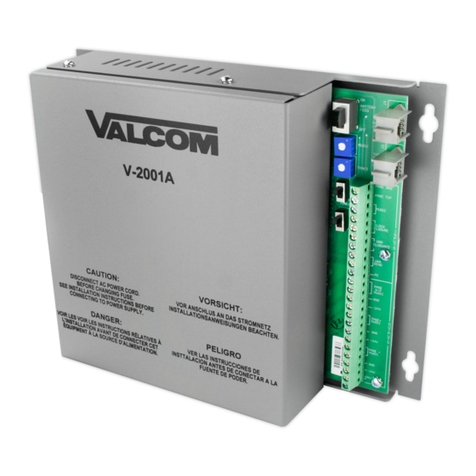
Valcom
Valcom V-2001A Technical specifications

Pololu
Pololu Wixel user guide
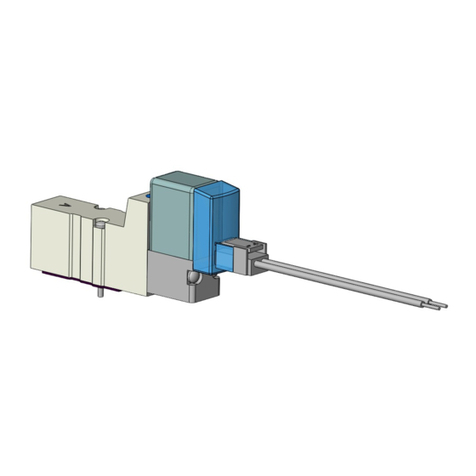
SMC Networks
SMC Networks SYJA300 Series Operation manual
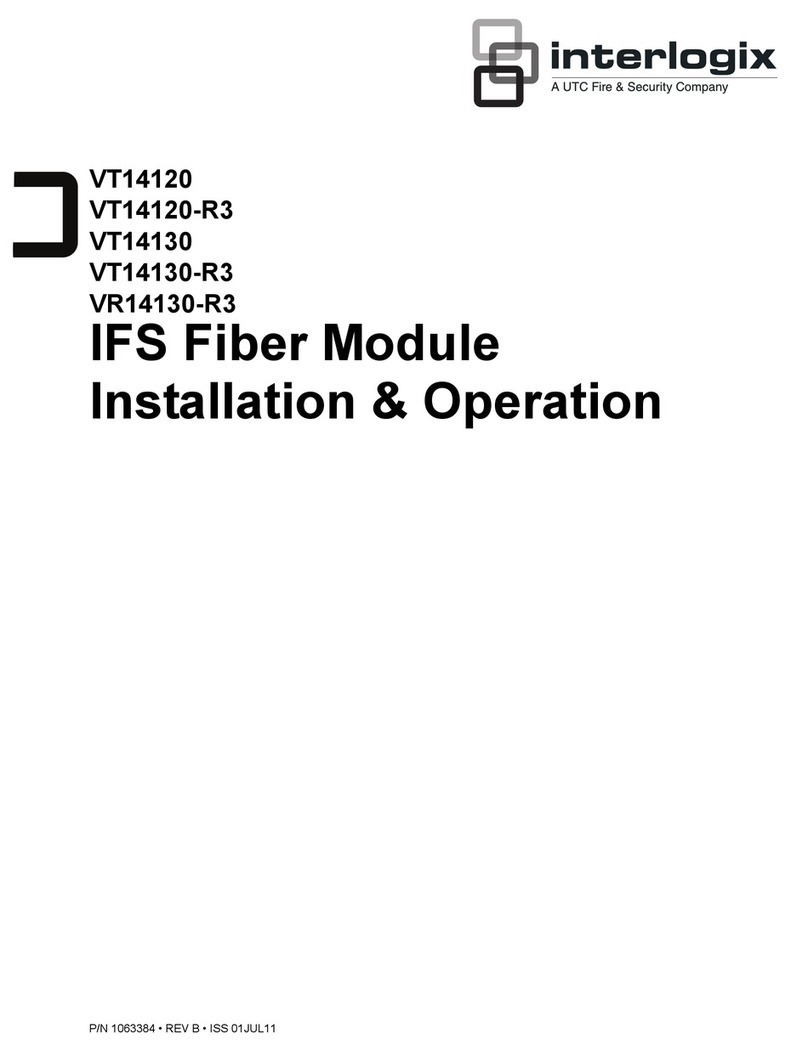
UTC Fire and Security
UTC Fire and Security interlogix VT14120 Installation & operation

Ohsung Electronics
Ohsung Electronics T007-MA-MD manual

Toto
Toto TEA99 V100 instruction manual



